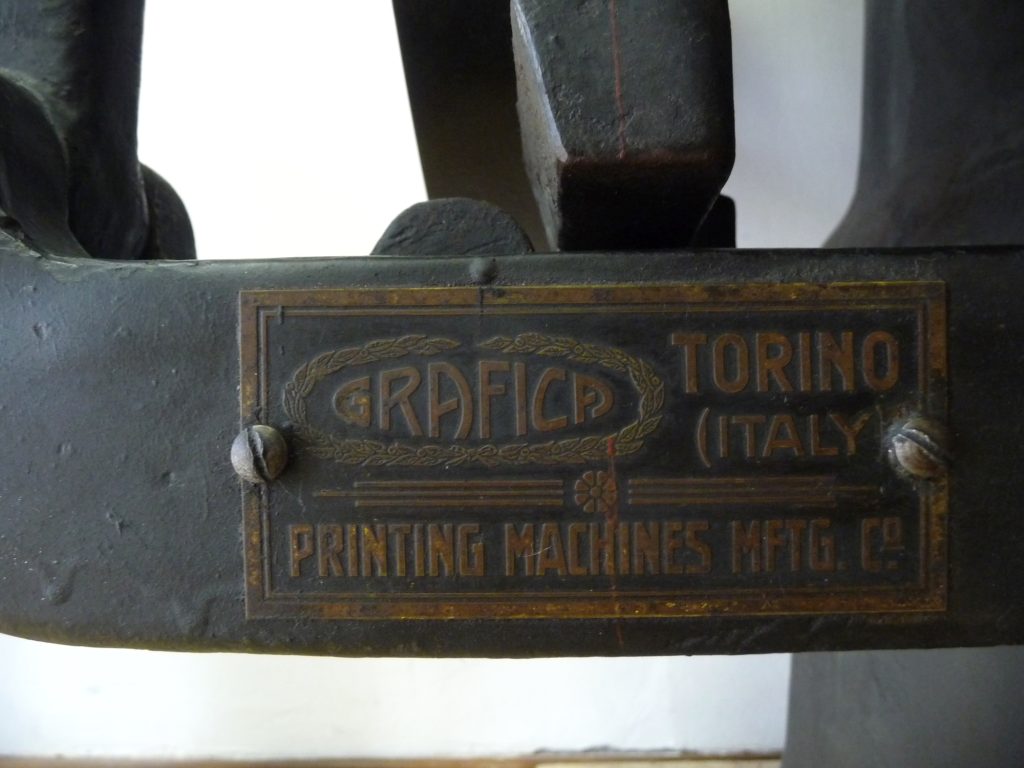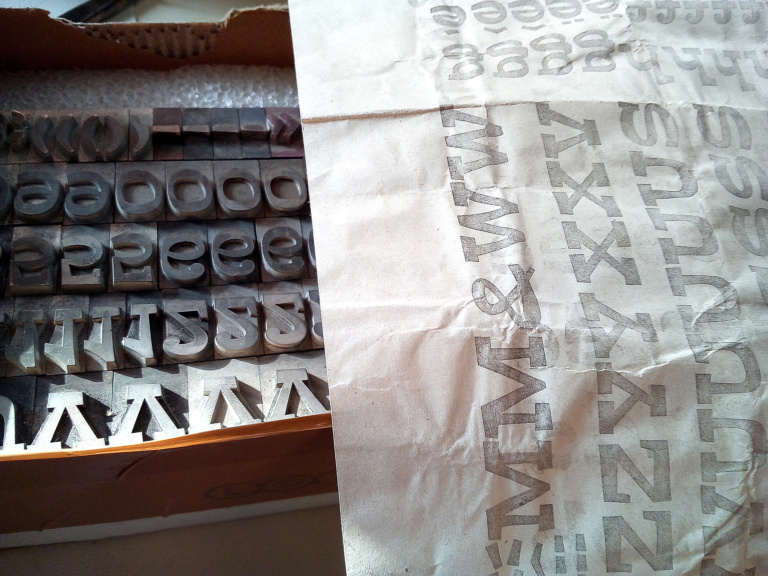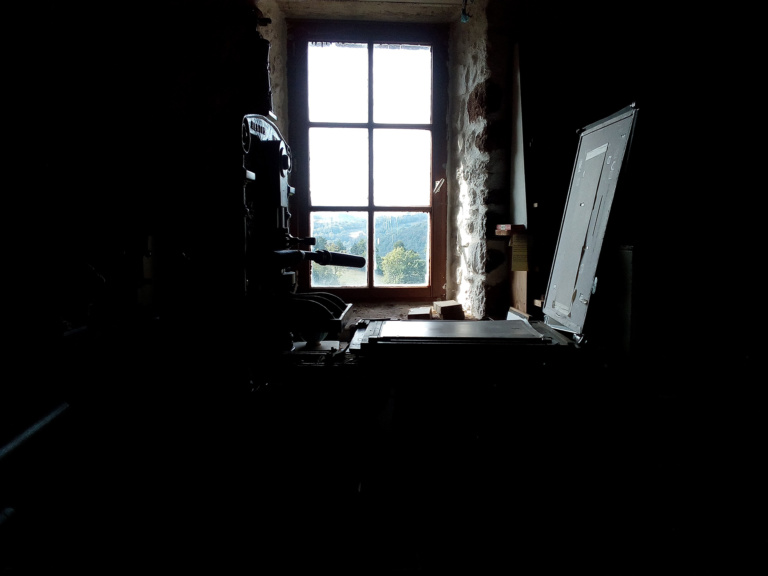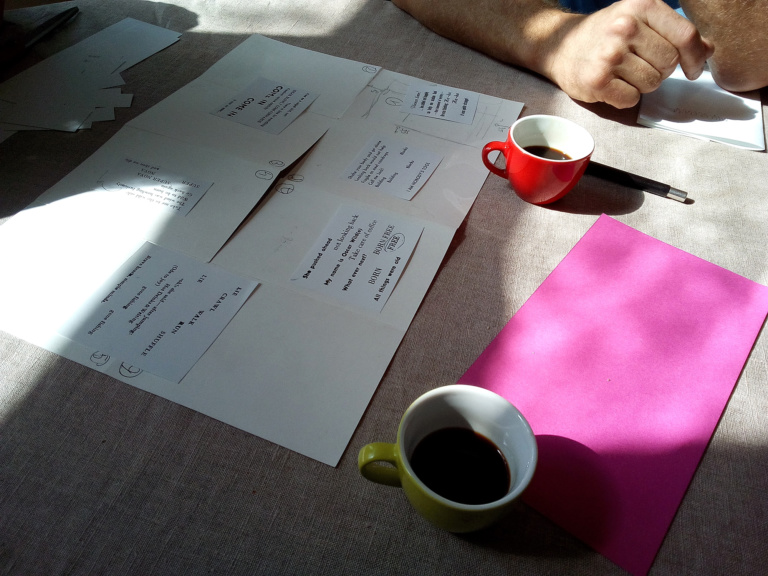Walk this way, ride this press
La platina (aka Pedalina) Saroglia Minima presente in studio è la prima macchina in cui mi sono imbattuto nel 2009 insieme ai miei ex soci di Novepunti.
Ai tempi stavamo cercando materiale con cui aprire l’officina e, online, trovai due annunci della stessa persona. Uno riguardava caratteri e attrezzatura varia, un altro proprio la pedalina. Il luogo era invitante, un paese poco fuori Milano, il prezzo un po’ meno. Decisi comunque di andare a vedere, coinvolgendo Lucio Passerini in qualità di esperto in materia.
Trovammo tutto dentro un garage e il proprietario ci raccontò la storia. In pratica il padre, dopo la chiusura della sua tipografia e alle soglie della pensione, aveva affittato lo spazio e trasferito lì le parti storiche dell’azienda continuando a stampare saltuariamente. Scomparso di recente, i figli avevano la necessità di sgomberare e non sapevano che farsene di tutta quella roba. Sulla strada del ritorno espressi le mie perplessità: i caratteri e la lingottiera si, la pedalina mi sembra un pezzo da museo. Lucio suggerì di fare almeno al contrario, pedalina si, caratteri no o forse. Contrattando sul prezzo.
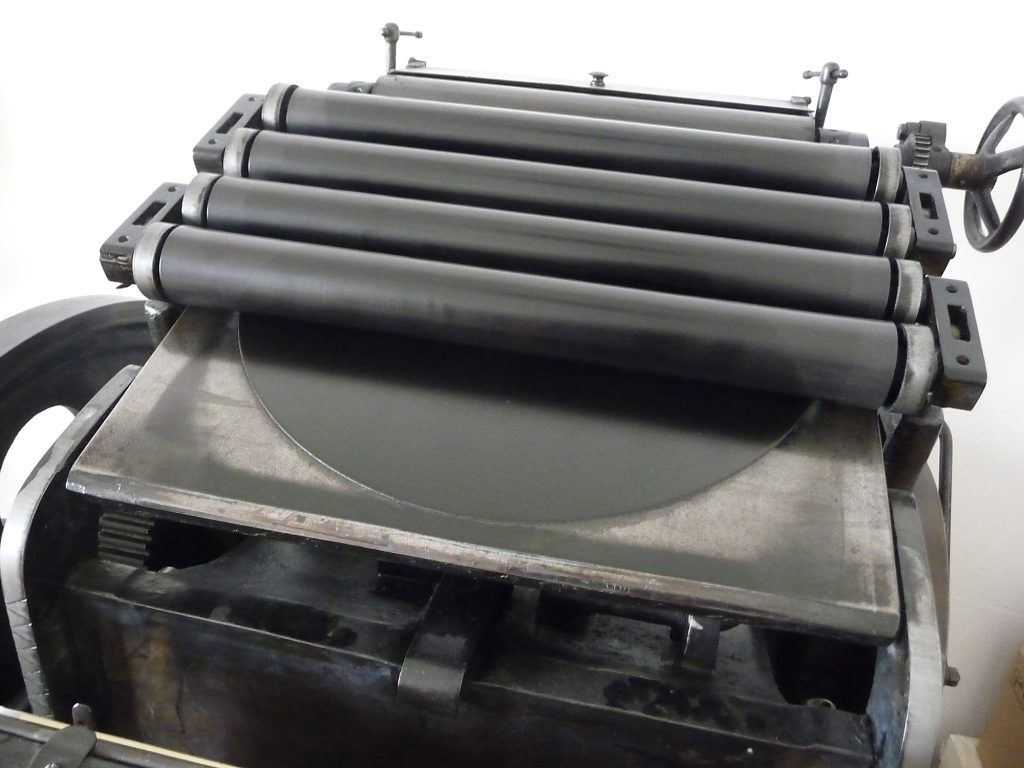
Portai anche gli altri a vedere, e decidemmo di prendere tutto. La contrattazione fu rapida e decisamente favorevole, il tempo era poco e la spuntammo per circa un quarto della cifra. Così, la mattina del 24 dicembre, durante una leggera nevicata, recuperammo sia la macchina che i caratteri, insieme al resto dell’attrezzatura.
Una volta in officina, gli demmo una pulita veloce e iniziammo ad usarla. Non conoscendo nessuno in grado di mostrarci il funzionamento, andammo un po’ alla cieca, arrivando persino a rompere qualche pezzo. Questo però ci permise, oltre che di imparare a stampare, anche di entrare in contatto con altre persone che, nel corso degli anni successivi, ci avrebbero supportato e aiutato.
Uno di questi è Antonio Scaccabarozzi, tecnico di macchine da stampa. Fu lui che riparò i famosi pezzi e rettificò la pressione e fu sempre lui che, anni dopo, mi diede una mano nell’attrezzare il mio nuovo laboratorio, pedalina compresa.
Dal trasferimento nel 2020 non l’ho più usata, solo pulita meglio (facendo venire alla luce l’anno di fabbricazione, 1926, e quello che penso fosse l’azienda distributrice) e oliata. Recentemente, però, ho deciso di tornare a farla girare per alcune piccole produzioni e anche per vedere come eravamo messi entrambi nel tornare a lavorare insieme.
I risultati sono stati ottimi, una busta “aziendale” per me e una cartolina a quattro colori per gli altri. A distanza di 92 anni non ha per niente perso lo smalto.
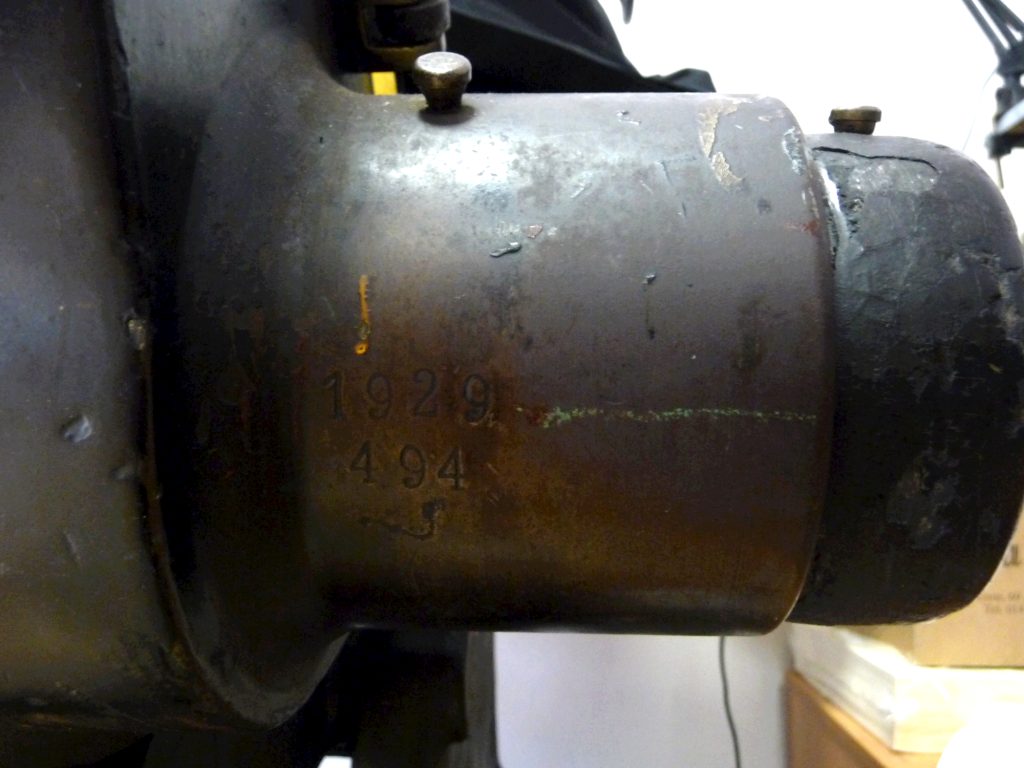
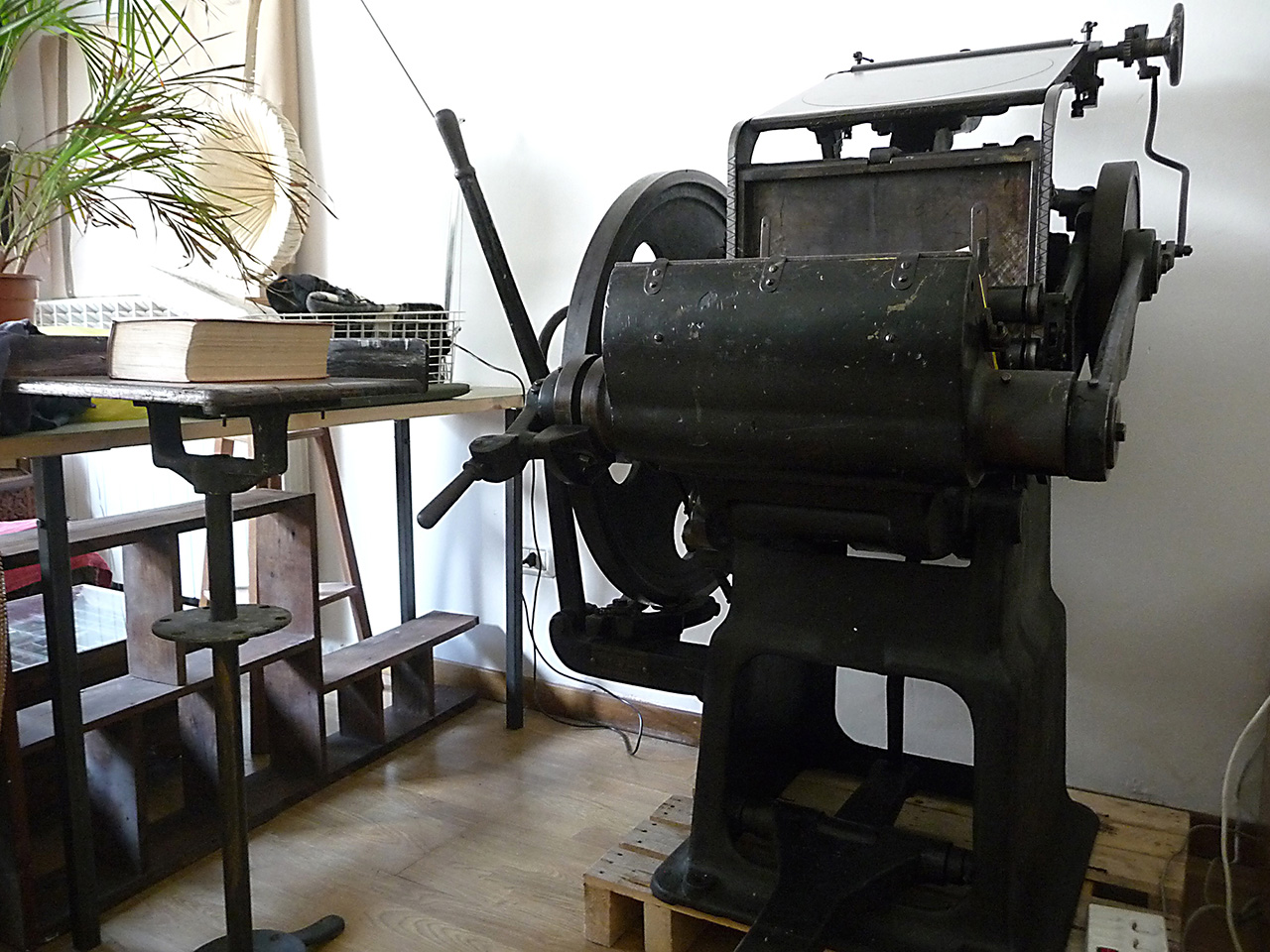
The Saroglia Minima platen (aka Pedalina) in the studio is the first press I came across in 2009 together with my former partners at Novepunti.
At the time we were looking for materials with which to open the printshop and, online, I found two ads from the same person. One about cabinets of typefaces and various equipment, the other about the platen. The location was interesting, a town just outside Milan, but the price was a bit less. I decided to go and have a look, involving Lucio Passerini as an expert.
We found everything in a garage and the owner told us the story. Basically his father, after closing the printshop and on the verge of retirement, had rented the space and moved the historical parts of the company there, continuing to print occasionally. Having recently passed away, his sons needed to move out and didn’t know what to do with all that stuff. On the way back I expressed my perplexity: yes for letters and furnitures but the platen seems a museum piece. Lucio suggested that we should at least do it the other way around, yes for the platen, no or maybe for the rest. Haggling over the price.
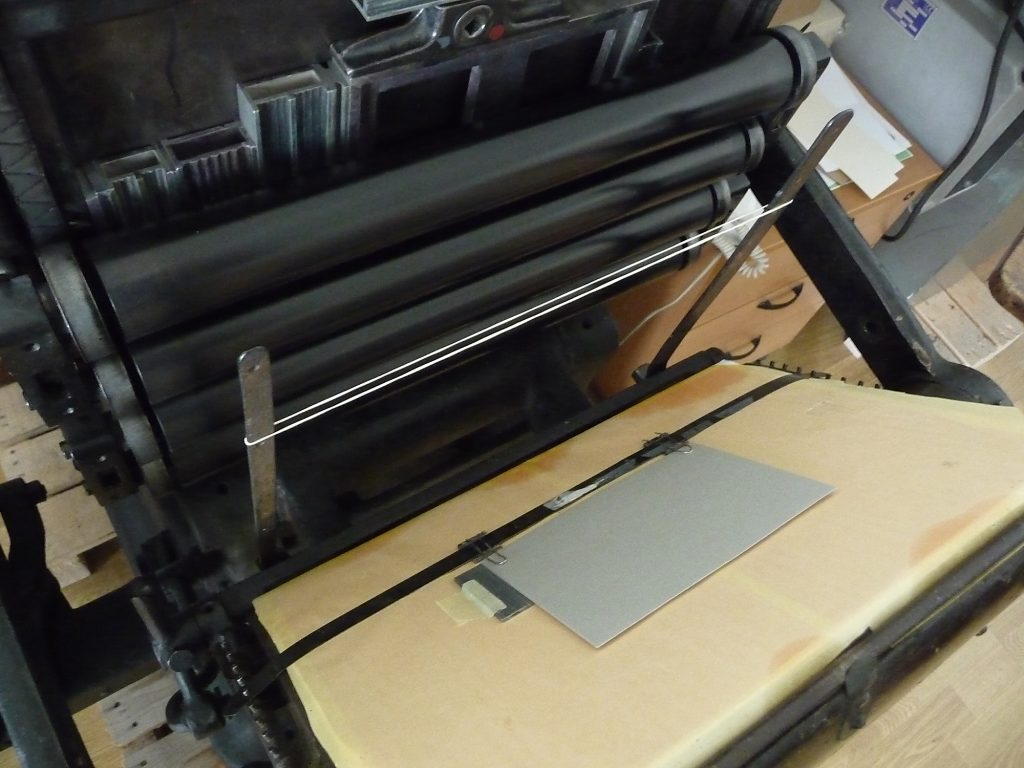
I took the others to see it too, and we decided to take everything. The bargaining was quick and quite good, time was short and we settled for about a quarter of the money. So, on the morning of 24 December, during a light snowfall, we retrieved both the press and the types, along with the rest of the equipment.
Once in the workshop, we gave it a quick clean and started using it. Since we didn’t know anyone who could show us how it worked, we went a little blind, even breaking a few parts. However, this allowed us not only to learn how to print, but also to get in touch with other people who would support and help us over the next few years.
One of these was Antonio Scaccabarozzi, a press technician. He was the man who repaired the famous parts and rectified the pressure, and also who, years later, gave me a hand in equipping my new workshop, including the platen.
I haven’t used it since moving to in 2020, only cleaned it better (revealing the year of manufacture, 1926, and what I think was the distributor) and oiled it. Recently, however, I decided to run it again for some small productions and also to see how we were both doing in getting back together.
The results were excellent, a ‘company’ envelope for me and a four-colour postcard for the others. 92 years later, it hasn’t lost its lustre at all.
